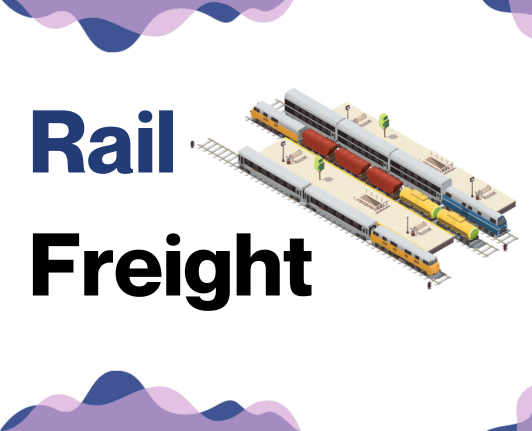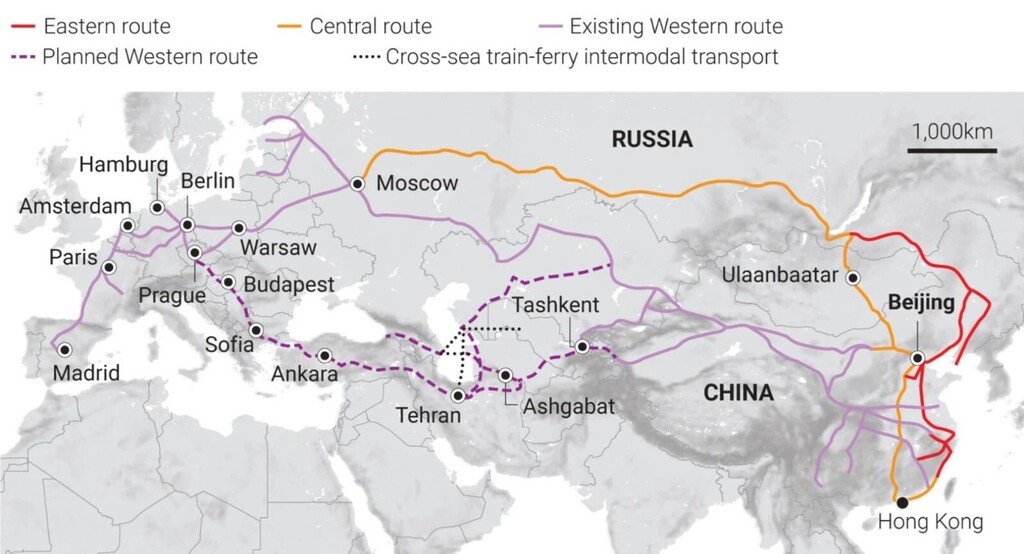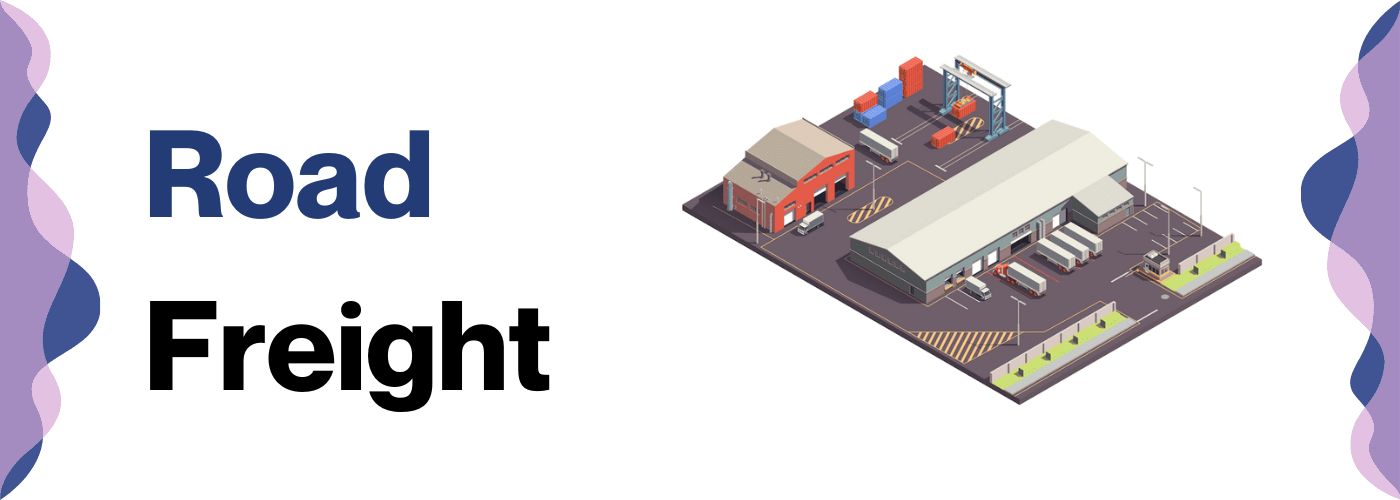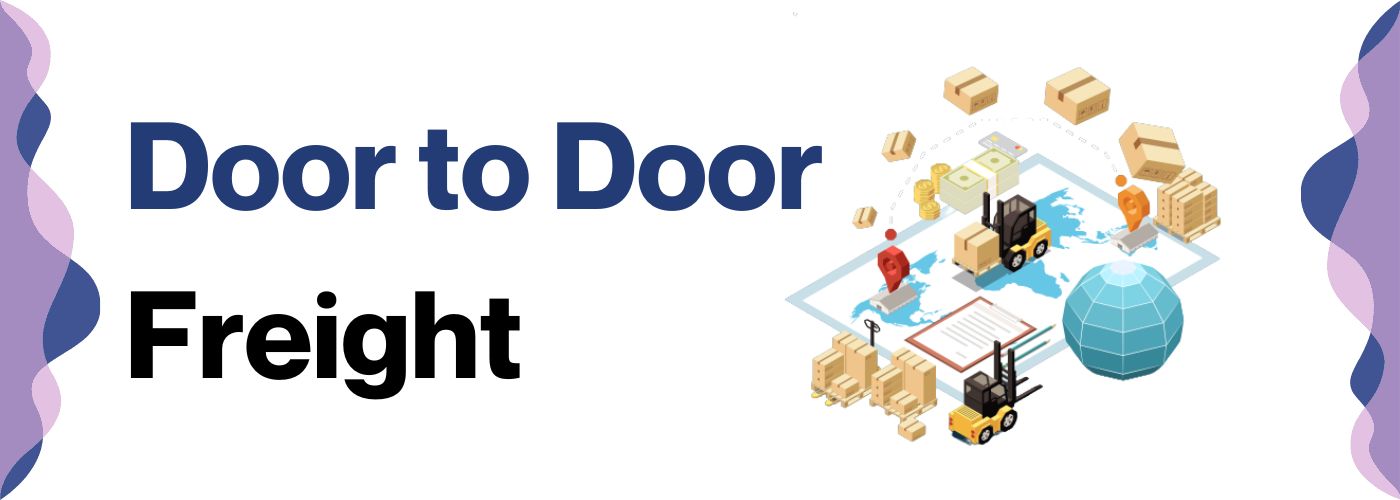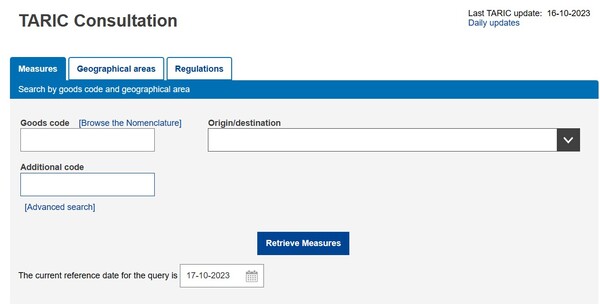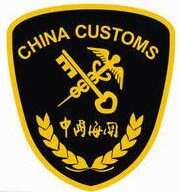So, you've just cracked open a fortune cookie that says, You're about to ship goods between China and Greece! Funny how things work out, isn't it? Challenged by fluctuating rates, puzzling transit times and complex customs regulations?
Fear not, our comprehensive guide will help you decode the intricate web of international freight shipping. Expect to explore a complete overview of different freight options - air, sea, road or rail - along with detailed insights into the customs clearance process, duties, taxes, and top-notch advice tailored specifically for businesses like yours.
If the process still feels overwhelming, let DocShipper handle it for you! Our expert team will steer your freight from departure to arrival, turning every challenge into a success for your business. Remember, the rough seas make the best sailors!
Which are the different modes of transportation between China and Greece?
Unraveling the pathway from China to Greece is like examining a chessboard. Certain moves simply perform better! You're maneuvering around vast distances and numerous borders, so some transport methods don't make the cut.
The practical choices left? Air and sea. With the strategy right, you can champion this intricate game of logistics. It’s all about aligning transport means with your shipping requirements to make the journey seamless.
So, think - fast-paced airfreight for urgent cargoes and cost-effective maritime transport for bulky shipments. The right move can make all the difference.
How can DocShipper help?
Expanding your business from China to Greece or vice versa? Leveraging our services could smooth your journey! Here at DocShipper, we handle everything - transport coordination, customs clearance, and other cumbersome administrative tasks. Why juggle logistics when professionals can do it for you? Reach out now and get a free, no-obligation estimate within 24 hours or call our expert consultants for free counsel!
DocShipper Tip: Sea freight might be the best solution for you if:
- You are shipping large volumes or bulky items, as sea freight offers the most space at a cost-effective rate.
- Your cargo doesn't have an urgent deadline, as sea freight typically has longer transit times compared to air or rail.
- Your shipping routes are between major ports, allowing you to leverage the extensive global network of sea shipping lanes.
Sea freight between China and Greece
The allure of doing business between China and Greece is undeniable. It's a powerful mix of Far-Eastern innovation and European charm. Central to this thriving trade relationship is ocean shipping, with colossal cargo ships charting the tumultuous seas between bustling ports of Shanghai and Piraeus.
If your business thrives on moving high-volume goods, sea freight proves a cost-effective solution. Yes, it's slower than air or rail, but when your cargo fills a container, the cost-to-volume metric falls in sea freight's favor.
However, the tranquility of the azure Mediterranean hides a storm of challenges faced by shippers. Errors in shipping procedures unfold like a Byzantine drama, and complex customs obligations can make the Acropolis seem uncomplicated.
Unclear on the proper labeling for your merchandise? Puzzled over the intricate web of tariffs and duties? Stay tuned as this guide shines a lighthouse on these murky waters, illuminating the path to effortless shipping between China and Greece.
Main shipping ports in China
Port of Shanghai
Location and Volume: Located on the Yangtze River delta, the Port of Shanghai is the world's busiest container port, boasting a shipping volume of more than 43.3 million TEUs.
Key Trading Partners and Strategic Importance: The port handles the largest share of China's foreign trade and is a significant gateway for goods traveling to and from Europe and the Americas.
Context for Businesses: If you're intending on high-volume trade with eastern Asia, the Port of Shanghai's extensive capacity and connectivity to global trade routes may be pivotal to your logistics.
Port of Shenzhen
Location and Volume: Located in Guangdong province, the Port of Shenzhen is a key port South China, with a shipping volume exceeding 27.7 million TEUs.
Key Trading Partners and Strategic Importance: Serving as a key hub in the Pearl River Delta, the port has strong trade relationships with Hong Kong, southeast Asia, and Europe.
Context for Businesses: With its multiple ports like Yantian, Chiwan, and Shekou, the Port of Shenzhen is crucial for businesses targeting markets in Southeast Asia and South China.
Port of Ningbo-Zhoushan
Location and Volume: Located in Zhejiang, Ningbo-Zhoushan is an important port on the East China Sea, with a shipping volume that reached 28.7 million TEUs.
Key Trading Partners and Strategic Importance: It has strong trade partnerships with North America, Southeast Asia, and Oceania, and is also the world's busiest port by cargo tonnage.
Context for Businesses: If you are a resource-laden business, especially oil and iron ore, the Port of Ningbo-Zhoushan could prove essential due to its top-ranking crude oil and ore transit status.
Port of Guangzhou
Location and Volume: Located on the Pearl River, Guangzhou Port is one of the top ports in the Pearl River Delta, handling more than 22.2 million TEUs.
Key Trading Partners and Strategic Importance: Operating under the Guangzhou Port Group, it primarily handles trade with ASEAN countries, the US, and EU.
Context for Businesses: If you’re looking to penetrate the booming import market, Guangzhou Port's strategic position as a comprehensive hub offers huge potential.
Port of Qingdao
Location and Volume: Located on the Yellow Sea, the Port of Qingdao is a key port in the Northern China region, with a shipping volume exceeding 21 million TEUs.
Key Trading Partners and Strategic Importance: It is a vital link to NE Asia, North America, Europe, and Oceania for trade and has an edge in container and bulk transport.
Context for Businesses: If you're looking to expand to Northeast Asia, the Port of Qingdao's excellent connectivity and comprehensive facilities may be a vital part of your logistics.
Port of Tianjin
Location and Volume: As the largest port in Northern China, Tianjin Port is located at the convergence of the Grand Canal, Hai, and Yellow rivers, handling over 16 million TEUs.
Key Trading Partners and Strategic Importance: It plays an integral role in trade with Japan, South Korea, and other North Pacific countries.
Context for Businesses: For businesses eyeing North Chinese markets and trade with North Pacific nations, Tianjin's port facilities covering an expansive hinterland may be an ideal fit.
Main shipping ports in Greece
Port of Piraeus
Location and Volume: Located in the capital city, Athens, the Port of Piraeus is the largest port in Greece and the busiest in the Eastern Mediterranean. It handles over 20 million TEUs annually.
Key Trading Partners and Strategic Importance: It serves as a gateway to the EU, given Greece's membership in the bloc, and has strong trading ties with countries in the Middle East, Eastern Europe, and Asia. A significant investor in the port is COSCO from China, adding to its strategic importance.
Context for Businesses: If you have trade interests spread across Asia and EU, the Port of Piraeus is an efficient connection between these markets due to its significant marine infrastructure and strategic location.
Thessaloniki Port
Location and Volume: The Port of Thessaloniki is located at the crossroad of multiple international trade routes in Northern Greece. The port handles a volume of more than 6 million TEUs annually.
Key Trading Partners and Strategic Importance: It's not only a critical point for Greece's trade with the Balkans and Turkey but also features vital rail connections that extend its reach further into Europe.
Context for Businesses: For businesses with supply chains extending into Southeast Europe and Turkey, Thessaloniki's geographic position and logistics advantages make it a likely point of entry or departure.
Port of Heraklion
Location and Volume: The Port of Heraklion is situated at the center of the South Aegean and routes, having a shipping volume of approximately 2 million TEUs annually.
Key Trading Partners and Strategic Importance: Given its proximity to North Africa and Middle East, it's understandably a central hub for those markets. Additionally, it also serves numerous Greek islands, making it a key domestic hub.
Context for Businesses: If your business activities involve North Africa, the Middle East, or even the Greek domestic market, the Port of Heraklion can serve as a critical juncture in your shipping strategy.
Port of Volos
Location and Volume: Located midway between Athens and Thessaloniki, the Port of Volos has a shipping volume of about 1.2 million TEUs annually.
Key Trading Partners and Strategic Importance: Its key trading partners mainly include other EU countries, Asia, and the USA. It is also an important gateway for goods originating from or headed to Central Europe.
Context for Businesses: If your trading needs are primarily within the EU, Asia, or the USA, the Port of Volos with its routes connecting these regions is likely a fitting choice for your shipping strategy.
Port of Patras
Location and Volume: The Port of Patras is located on the western coast of the country, handling over 800,000 TEUs annually.
Key Trading Partners and Strategic Importance: Given its location, Italy serves as a principal trading partner, but the port also maintains links with Spain and a host of Northern European countries.
Context for Businesses: If you need a dependable route to Italy and other Northern European markets, opting for the Port of Patras could ensure a reliable and efficient means of reaching these destinations.
Port of Igoumenitsa
Location and Volume: The Port of Igoumenitsa is located on the northwestern coast of Greece with a shipping volume of over 500,000 TEUs annually.
Key Trading Partners and Strategic Importance: It maintains a strong maritime connection with Italy and serves as a transport link towards the European corridor, with Turkey also being a significant trading partner.
Context for Businesses: If your business is heavily involved with Turkey or uses transportation routes into deeper parts of Europe, consider integrating the Port of Igoumenitsa into your shipping strategy due to its strategic position.
Should I choose FCL or LCL when shipping between China and Greece?
Choosing between Full Container Load (FCL) or Less than Container Load (LCL), also known as consolidation, is a pivot point in your shipping journey from China to Greece. The decision you make can greatly determine your shipment's cost, speed, and success.
This section will illuminate the differences between these two sea freight options, guiding you to choose smartly. Get ready to dive into a sea of knowledge that will empower you to make the best decision tailored to your specific shipping needs. Let's chart the course to your optimal shipping strategy.
LCL: Less than Container Load
Definition: LCL shipment, or Less than Container Load, is a shipping method where multiple shippers share the same ocean-going freight container for their goods.
When to Use: When your cargo measures less than 13/14/15 CBM (Cubic Meters), it might not be cost-efficient to book a full container, and LCL freight would be your go-to choice. It offers price flexibility for low-volume shipments, and allows for more flexible shipping plans.
Example: Let's suppose you own a China-based small business selling handmade porcelain dishes, and your Greek clients typically order no more than 10 CBM at a time. In this scenario, utilizing LCL shipping rather than booking a full container spares you from paying for unused space, making your business more cost-efficient.
Cost Implications: The overall cost for LCL shipment is typically lower for smaller volumes than shipping a full container. LCL freight rates are determined based on the volume of your goods. However, it's vital to remember that an LCL shipment might incur more handling fees at the port due to the need to consolidate and de-consolidate the container shared with other shippers.
FCL: Full Container Load
Definition: FCL, or Full Container Load, is an option in international freight where a container is exclusively used for a single shipment. It's categorized mainly into two types: a 20'ft container and a 40'ft container.
When to Use: FCL shipping shines when you're dealing with a high volume of cargo, typically more than 13-15 CBM. It offers the safety of having your goods sealed in the container from origin to destination, mitigating the risk of damage or theft.
Example: Let's imagine Company A wants to deliver 60 pallets of olive oil from China to Greece. Given the size, using multiple LCL shipments won't be cost-effective nor safe. Instead, an FCL container, specifically a 20'ft or 40'ft depending on their cargo size, would be perfect for their needs.
Cost Implications: While the initial FCL shipping quote may seem higher than LCL, the cost per unit is generally cheaper when you're moving large volumes. Remember, sometimes choosing an FCL 40'ft container over a 20'ft one might provide additional cost benefits given the larger volume it can carry. Always consider the size, weight, and volume of your cargo for the most cost-efficient solution.
Unlock hassle-free shipping
Confused about consolidation or full container shipping from China to Greece? DocShipper simplifies the maze of international freight for you! Our seasoned ocean freight experts consider diverse factors: cargo volume, costs, timing, and safety, to tailor the best shipping strategy for your business. Stop stressing over this complex choice - let us do the heavy lifting. Connect with DocShipper now for a free freight estimation. Let us make your global shipping a breeze!
How long does sea freight take between China and Greece?
The average shipping time between China and Greece via sea freight is approximately 22-28 days. However, several factors can influence this transit time, including the specific ports involved, the weight, and the nature of the goods. In order to get an accurate estimation, reaching out to a freight forwarder like DocShipper for a tailored quote is highly recommended.
Below is a text-only table showcasing average transit times from the 4 main freight ports in China and Greece.
| China Ports | Greece Ports | Average Transit Time (Days) |
| Shanghai | Piraeus | 24 |
| Shenzhen | Thessaloniki | 25 |
| Ningbo | Heraklion | 28 |
| Guangzhou | Volos | 22 |
*Note: Transit times depicted are average and may vary depending on various factors stated above.
How much does it cost to ship a container between China and Greece?
Understanding the cost of shipping a container from China to Greece? It's a bit tricky due to the dynamic nature of ocean freight rates. Several aspects, from Point of Loading and Destination to the selected carrier and the type of goods, can cause fluctuations. Additionally, monthly market dynamics can further influence the shipping cost.
However, don't let this complexity daunt you; our shipping experts meticulously analyze all these factors to bring you the best possible rates. Remember, each quote is unique, and we're committed to providing tailored solutions for your shipping needs. Never fear, we've got your shipment covered!
Special transportation services
Out of Gauge (OOG) Container
Definition: Out of Gauge (OOG) containers are special shipping units designed to transport oversized cargo that doesn't fit within the dimensions of a standard shipping container.
Suitable for: Large machinery, industrial equipment, large-scale artwork, or any oversized or irregularly shaped items.
Examples: This includes goods such as wind turbine blades, heavy machinery for mining or construction, and large sculptures or installations for exhibitions.
Why it might be the best choice for you: If your business is dealing with equipment or goods that exceed the dimensions of standard containers, an OOG container can provide the necessary space and protection, ensuring safe transport from China to Greece.
Break Bulk
Definition: Break bulk refers to the method of shipping goods individually, in sacks, bags, boxes, drums or barrels, rather than containerizing them.
Suitable for: Commodities that are non-uniform, large, heavy or of high value.
Examples: Products delivered in such manner often include construction materials, oil or gas equipment, and even undercover military goods.
Why it might be the best choice for you: If your cargo is dimensionally complex or too large for standard containers, break bulk shipping enables easier handling and flexibility in terms of space utilization.
Dry Bulk
Definition: Dry bulk refers to the transport of homogenous, loose cargo such as grain, coal, iron ore in large quantities.
Suitable for: Goods that can be poured or scooped, like grains, coal, cement, fertilizer and other similar items.
Examples: Iron ore being transported for the steel industry, or pulses and grains for the provision industry.
Why it might be the best choice for you: If you're shipping large quantities of non-packaged commodities, dry bulk shipping ensures efficiency and cost-effectiveness.
Roll-on/Roll-off (Ro-Ro)
Definition: Roll-on/Roll-off (Ro-Ro) service offers the shipment of cargo which drives on and off the vessel on its own wheels or with the aid of a platform vehicle.
Suitable for: Wheeled cargo such as automobiles, trailers, railway carriages, and construction equipment.
Examples: Farmers' tractors, luxury cars for car dealerships or even buses for public transportation.
Why it might be the best choice for you: Choosing a ro-ro vessel means easy loading and unloading processes and the guarantee that your cargo will remain intact throughout its journey.
Reefer Containers
Definition: Reefer containers are temperature-controlled units suitable for cargo that requires a steady temperature throughout the journey.
Suitable for: Perishable goods including food products like fruits, vegetables, dairy products, meat and seafood, as well as pharmaceuticals.
Examples: Think about a seafood distributor in Greece needing fresh shrimp from China, or a pharmaceutical company shipping temperature-sensitive vaccines.
Why it might be the best choice for you: If you’re shipping perishable goods or items that need to be kept within a specific temperature range, reefer containers are crucial for maintaining the quality and integrity of your products.
Remember, choosing the right container requires full understanding of your unique shipping needs. DocShipper, backed by years of international freight forwarding expertise, can readily assist with your shipping queries and requirements. Don't hesitate to ask for our aid, and we'll provide you a free shipping quote in less than 24 hours. Let's make international shipping a seamless process together.
DocShipper Tip: Air freight might be the best solution for you if:
- You are in a hurry or have a strict deadline requirement, as air freight offers the fastest transit times.
- Your cargo is less than 2 CBM (Cubic Meter), making it more suitable for smaller shipments.
- Your shipment needs to reach a destination that is not easily accessible by sea or rail, allowing you to tap into the extensive network of global airports.
Air freight between China and Greece
Air freight between China and Greece is like clockwork precision, it's trustworthy, and ultimately ideal for smaller, expensive products. Ever wondered how fresh, juicy strawberries from Yunan reach Greek supermarkets overnight?
Air freight is the answer; it's a sure-fire way for speedy delivery. For high-tech companies needing urgent delivery of tiny but pricy microchips, again, air freight is key. But there's a little devil lurking in the details. Many businesses stumble not only in correctly estimating the 'chargeable weight' of their goods, but also in getting blindsided by hidden cost pitfalls in air freight.
Fear not, in this guide, we'll expose these bloopers, to save your money and peace of mind.
Air Cargo vs Express Air Freight: How should I ship?
Choosing how to ship goods from China to Greece doesn't have to be a headache! When deciding between air cargo - typically consolidated in a commercial airline - and express air freight – quickly delivered in a dedicated plane, think about what's best for your business.
From lead times, cost to the volume of shipment, we're here to demystify both options, so you can make an informed decision.
Should I choose Air Cargo between China and Greece?
Air cargo between China and Greece is a solid choice, given its cost-effectiveness and reliability. Prominent airlines for such shipments include Air China Cargo and Aegean Airlines.
While this method might align with your budgetary goals, be prepared for slightly longer transit times due to fixed schedules. Worth noting is that air cargo becomes more lucrative for shipments over 100/150 kg (220/330 lbs). So, if you're planning to ship goods within this weight range, air cargo can efficiently serve your needs.
Should I choose Express Air Freight between China and Greece?
Opting for Express Air Freight, a service employing dedicated cargo planes devoid of passengers, could be your go-to for shipments under 1 CBM or weighing between 100-150 kg (220-330 lbs).
This method boasts rapid delivery, reliability, and regular updates. It could be the optimal solution with leading couriers like FedEx, UPS, or DHL at your service. Imagine delivering smaller goods efficiently without worrying about logistics bottlenecks. Remember, timely delivery is key in cross-border business, and the right partner makes all the difference.
Main international airports in China
Shanghai Pudong International Airport
Cargo Volume: Shanghai Pudong International Airport handled over 3.6 million tons of cargo in 2020, making it one of the busiest cargo airports globally.
Key Trading Partners: The key trading partners are primarily in North America, Europe, Australia, and other parts of Asia like Japan and South Korea.
Strategic Importance: As the primary airport serving Shanghai, the world's busiest container port, the location is a strategic hub for both regional and international transportation.
Notable Features: Being a hub for China Eastern Airlines and Air China, it offers regular cargo flights to various international destinations.
For Your Business: The airport's extensive connections and high freight volume indicate that your shipments are more likely to have direct and/or frequent flight options, which can reduce transit times and potentially lower costs.
Beijing Capital International Airport
Cargo Volume: In 2019, the airport handled over 1.96 million tonnes of mail and cargo.
Key Trading Partners: Key trading partners include Europe, the USA, Japan, and South Korea.
Strategic Importance: As China's second busiest cargo airport and one of the busiest in the world, Beijing Capital International Airport is a crucial issue for cargo transportation in and out of the country.
Notable Features: It's a hub for several major airlines such as Air China, China Southern Airlines, and China Eastern Airlines.
For Your Business: The vast number of international connections can ensure a versatile approach to your cargo shipping strategy, offering multiple transport options for your goods.
Guangzhou Baiyun International Airport
Cargo Volume: In 2020, cargo throughput exceeded 1.93 million tons.
Key Trading Partners: Main trading partners include other Asian countries, the United States, and the European Union.
Strategic Importance: Located in the heart of the Pearl River Delta, it is one of China's main air transport hubs and one of the three busiest aviation hubs in China.
Notable Features: It serves as a hub for China Southern Airlines and FedEx Express.
For Your Business: Its strong connectivity to both international and domestic locations, combined with its strategic positioning, can provide efficient and well-coordinated cargo transport solutions.
Shenzhen Bao’an International Airport
Cargo Volume: In 2020, the airport handled over 1.34 million tons of cargo.
Key Trading Partners: Prominent trading partners include other Asian countries, the USA, and Europe.
Strategic Importance: It's one of the busiest cargo airports in China and plays a significant role in transporting goods to and from the technologic and economic hub of Shenzhen.
Notable Features: It serves as a hub for Shenzhen Airlines and UPS.
For Your Business: Given its strategic location, it's an excellent choice for companies looking to get products to manufacturers or consumers in China's booming South.
Chengdu Shuangliu International Airport
Cargo Volume: In 2019, the airport handled approx 660,000 tonnes of cargo.
Key Trading Partners: It predominantly serves Asia, with notable partnerships in Europe and North America.
Strategic Importance: Serving the most populous province in Western China, it stands as a significant regional transit and cargo distribution center.
Notable Features: Major airlines such as Air China and Chengdu Airlines use it as a hub.
For Your Business: For businesses focusing on Western China or Central Asia, Chengdu's airport offers the best logistical point to reach those markets directly and efficiently.
Main international airports in Greece
Athens International Airport
Cargo Volume: Athens International Airport, also referred to as Eleftherios Venizelos, moved approximately 96,467 tonnes of cargo in 2019.
Key Trading Partners: The airport's main trade partners include countries from the European Union, the Middle East, Asia, and North America.
Strategic Importance: As the largest airport in Greece, Athens International is a significant portal for businesses looking to access the European, Asian, and North Africa market. It's a key hub for DHL Express, FedEx Express, and UPS Airlines.
Notable Features: Athens airport provides extensive air cargo services including a fully automated cargo terminal and dedicated cargo aircraft parking.
For Your Business: Consider Athens International if your business reaches customers across different continents. With high frequencies to major world cities and efficient customs processes, faster delivery times can be achieved than via sea freight.
Thessaloniki Airport Makedonia
Cargo Volume: The airport processed around 15,860 tonnes of cargo in 2019.
Key Trading Partners: The primary trading partners are countries in the European Union, Balkans, the UK, and North America.
Strategic Importance: Thessaloniki Airport serves as the main airport in Northern Greece and the wider Balkan area. It's a key hub for major shipping companies such as DHL, FedEx, and UPS.
Notable Features: The airport offers dedicated cargo services with modern facilities including warehousing, cold storage, and customs facilities.
For Your Business: Thessaloniki Airport could be a viable choice if your shipping destinations are primarily within the EU and Balkans. Its strategic location and excellent road links could reduce domestic distribution costs and times.
Heraklion International Airport
Cargo Volume: In 2019, Heraklion International Airport moved approximately 8,000 tonnes of cargo.
Key Trading Partners: The top trading partners are predominantly countries in the European Union, the Middle East, and North Africa.
Strategic Importance: Being located on the island of Crete, the airport serves as a gateway to the southern part of the country and the Mediterranean.
Notable Features: Despite being smaller than the other major Greek airports, Heraklion offers a variety of cargo management services and has direct highway access for faster domestic distribution.
For Your Business: With its access to the Southern Greek and Mediterranean markets, Heraklion International Airport would be a beneficial choice for businesses shipping goods to these regions. Its smaller size could lead to reduced waiting times and faster processing.
How long does air freight take between China and Greece?
On average, air freight shipping between China and Greece takes approximately 6-8 days. However, transit times can fluctuate depending on factors such as the origin and destination airports, weight of the goods, and their nature (perishable, dangerous, etc.). For accurate and custom-tailored shipping timelines, it's recommended to consult with a seasoned freight forwarder like DocShipper.
How much does it cost to ship a parcel between China and Greece with air freight?
Air freight parcels from China to Greece could range from $2 to $20 per kg, but providing an exact cost isn't feasible. Factors such as departure and arrival airport distance, parcel dimensions and weight, and nature of goods contribute to the final price.
Rest assured, our team is dedicated to offering custom quotes tailored to your specific needs. Always remember, we quote individually, ensuring optimal pricing. Start a fruitful partnership with us by reaching out. Contact us and, within 24 hours, receive your free quote.
What is the difference between volumetric and gross weight?
Starting with the basics, gross weight refers to the actual physical weight of your shipment including the goods, packaging, pallets, and any other materials. On the other hand, volumetric weight isn't about the weight, but about the total space your shipment takes up in the cargo hold.
In the realm of Air Cargo services, gross weight is calculated by placing the fully packaged cargo on a scale and recording the result in kilograms. For Express Air Freight, the process is the same. To illustrate, imagine we have a shipment of 1000 small action figures, weighing 180kg in total. To convert this to pounds, we multiply by 2.20462, thus our shipment's gross weight is 180kg, or about 397 pounds.
Volumetric weight, also known as dimensional weight, is calculated differently. The dimensions of the package are multiplied together (length x width x height), and the resulting total is then divided by a specific number (usually 5000 for Air cargo and 6000 for Express Air Freight).
Let's say our shipment of action figures is in a crate with dimensions of 1.5m x 1.5m x 1.5m. Using the Air cargo dividing factor, the volumetric weight would be 4.5 cubic meters/5000, giving us 0.9kg, or about 1.98 pounds. With Express Air Freight, using the 6000 factor gives us 0.75kg, or 1.65 pounds.
Now, why are these calculations essential? Airlines base their freight charges not just on gross weight but also on volumetric weight.
They use whichever is higher to ensure they're compensated sufficiently either for the plane's weight capacity or for the space a shipment takes up. It's therefore vital to calculate both to estimate your shipping costs accurately.
DocShipper tip: Rail freight might be the best solution for you if:
- You are looking for a cost-effective transportation method for large volumes.
- Your shipping route is well-connected by rail, providing a reliable and environmentally friendly option.
- Your cargo's destination and origin are near rail terminals, minimizing the need for additional road transportation.
Rail freight between China and Greece
Does the image of rumbling rail freight trains chugging full steam ahead from China to Greece color your day with an adventurous tinge? Buckle up for a fascinating journey tracing the rail freight history between these two lands!
Starting around 2009, a rail freight pathway was established, tying these two great civilizations together again, but this time via locomotive, traversing countries like Kazakhstan, Russia, Belarus, Poland, and Germany. This continuous steel artery predominantly carries electronics, auto parts, and other commodities, bolstering trade and nurturing a strong cooperative economic relationship.
While rail freight presents an attractive balance between cost and transit times compared to air and sea freight, it comes with its snags, particularly with customs procedures and geographic challenges. However, if you're a patient explorer opting for economic and eco-friendly transportation, rail freight might just be the station you'd want to stop.
Ready for more? Let's delve deeper and see if rail is the right track for your shipping needs!
What are the main train stations between China and Greece?
Xiangtan Train Station, China
As a gateway to one of China's key manufacturing hubs, this station sees a considerable amount of cargo traffic. It's strategically located in the Hunan province, connecting both Northern and Southern China, catering to diverse cargo needs. Moreover, it handles a vast volume of cargo, enhancing its strategic importance. If your business deals with heavy machinery, chemical, metals, Xiangtan could serve as a primary touch-point for your shipments.
Wuhan Train Station, China
This station, nestled in the bustling Hubei province, is pivotal to the New Eurasian Land Bridge. It handles a fairly high cargo volume, particularly in machinery, electronics, and agro-products. It may be worth noting that it accentuates its importance for businesses dealing in these categories. Wuhan acts as a critical link connecting Eastern, Western, and Southern China, which could add efficiency to your logistics.
Dongguan Train Station, China
Dongguan holds a prominent position in the Pearl River Delta, one of the leading economic and manufacturing regions. Known for managing high volumes of electrical equipment and textiles, it's connected to Eastern and Western China via high-speed freight corridors. If you're in the business of textiles or electricals, Dongguan might just be the perfect entry point to streamline your logistics across China.
Xi’an Train Station, China
Xi'an station, with its extensive rail network, connects Western China with Europe, part of the Silk Road Economic Belt.
This station handles a significant cargo volume, especially goods such as machinery, pharmaceuticals, and chemicals. So, if your company deals with any of these, utilizing Xi'an as a hub in your supply chain may maximize your shipping efficiency.
Thessaloniki Train Station, Greece
This station, based in Greece's second-largest city and a significant port, plays a vital role in the country's rail freight landscape. Goods such as foods, wood, fuels, and machinery make up its substantial cargo volume. Its position, connecting to various European countries, marks its strategic importance. If your business encompasses these goods, channeling your goods via Thessaloniki could serve you well.
Athens Train Station, Greece
Located in the country's capital, this train station serves as a bridge between the East and the West. Its strategic role is compounded by its significant freight volume, consisting predominantly of manufactured goods, oil, and food products. Should your business falls into these categories, Athens could offer a direct connection to your Greek and European markets.
Inoi Train Station, Greece
As Greece's largest railway freight station, Inoi offers connections to several European countries. It experiences a considerable volume of cargos such as ceramics, metal products, and food. Inoi's pivotal location and extensive infrastructure may streamline your logistics processes if your business deals in these goods.
Idomeni Train Station, Greece
While somewhat smaller, Idomeni's nearness to the North Macedonian border aids its strategic importance. Goods commonly freighted from this station include raw materials, metals, and machinery. If your business manufactures using such materials, incorporating Idomeni into your shipping strategy could offer direct, streamlined access to North Macedonia and beyond.
Each of these stations could promote agile, efficient logistics, so understanding their unique features could significantly support your business's specific shipping needs.
How long does rail freight take between China and Greece?
Shipping duration from China to Greece via rail freight significantly varies depending on several factors, such as the chosen route, speed of the train, customs clearance times, and more. On average, you can expect it to take around 18 to 20 days.
Here are some specifics of the rail networks connecting China and Europe, their estimated transit times, and frequency of departures. Remember, these are estimates as transit times can often be unpredictable due to unforeseeable circumstances.
- Zhengzhou to Hamburg (Germany): ~ 15-17 days, Departs Daily
- Zhengzhou to Munich (Germany): ~ 17-18 days, Departs Monday and Friday
- Zhengzhou to Liege (Belgium)/Milan (Italy): ~ 20 days, Departs Monday, Thursday and Friday
- Chongqing to Duisburg (Germany): ~ 16-17 days, Departs Monday/Friday
- Yiwu to Hamburg (Germany): ~ 16-18 days, Departs Monday/Thursday/Friday
- Yiwu to Duisburg (Germany): ~ 16-18 days, Departs Monday/Thursday/Friday
- Yiwu to Madrid (Spain): ~ 20 days, Departs Monday/Thursday/Friday
- Wuhan to Hamburg (Germany): ~ 17-19 days, Departs Saturday/Wednesday/Thursday
- Wuhan to Duisburg (Germany): ~ 17-19 days, Departs Saturday/Wednesday/Thursday
- Chengdu to Tilburg (Netherlands): ~ 18 days, Departs Wednesday/Sundayy
- Suzhou to Hamburg (Germany): ~ 18-20 days, Departs Sunday
- Suzhou to Duisburg (Germany): ~ 18-20 days, Departs Sunday
- Xi'an to Duisburg (Germany): ~ 18-20 days, Departs Wednesday/Thursday/Friday/Saturday
What are the advantages of rail transport between China and Greece
Choosing rail transport to ship your goods from China to Greece offers a sweet spot between speed and cost. Compared to sea freight, rail reduces the shipping times by up to 60%, ensuring your goods arrive quicker than by boat. On the other hand, compared to air freight, you can expect substantial savings—rail can be as much as 50% cheaper, perfect if you’re on a tight budget.
Let's say you're shipping electronics, a time-sensitive and value-dense cargo. By using rail freight, you save shipping time compared to sea freight preventing potential losses due to rapid market fluctuations, whereas, you also reduce shipping costs compared to air freight, maximizing your profits. It's clear—the rail offers an excellent alternative to both sea and air transportation, striking the perfect balance between efficiency and economy.
How much does shipping goods by train between China and Greece cost?
Nailing down a specific cost for rail freight between China and Greece is a bit like trying to predict the weather – it's tricky. Several variables are at play, from cargo weight and size to the exact departure and arrival points.
Don't stress, though. Our expert team thrives on complexity, and we'll work tirelessly to tailor the most competitive quotes for your shipment. Every job is unique, and that's how we treat them. Intrigued about the potential cost? Reach out today. We'll get back to you with a free, no-obligation quote in 24 hours or less. Let's conquer the uncertainties, together.
DocShipper tip: Road freight might be the best solution for you if:
- You're looking for a cost-effective option for shorter routes. For relatively short distances, road freight can be more economical than air freight and faster than sea or rail.
- Your destination is within the same continent or a neighboring country. Road freight is often the most straightforward and quickest option for cross-border freight and shorter distances.
- Your shipment is of irregular size or shape. Trucks offer flexibility in terms of cargo types and sizes, making it easier to transport goods that might not fit into standard sea containers or air cargo spaces.
Trucking between China and Greece
Venturing into the world of cross-border trucking services between China and Greece? Excellent choice! It might be your golden ticket for effective transportation - think shorter transit times via prevalent Eurasian routes, decent road conditions, and competitive costs relative to other freight modes.
This swift overland journey also packs in a punch with fewer weather disruptions and the flexibility of door-to-door delivery. But tread carefully, as challenges such as border controls could slow you down. Let's buckle up and hit the road together, exploring the ins and outs of trucking between these two vibrant nations.
What if I can’t fill a truck between China and Greece?
Plunging into the world of freight forwarding? Understanding the difference between Less Than Truck Load (LTL) and Full Truck Load (FTL) could be your passport to optimal, cost-efficient shipping from China to Greece.
Get a grip on these approaches and discover how businesses, like yours, harness them for smooth sailing across the logistics seascape.
LTL: Less than Truck Load
Less than Truck Load, or LTL freight, offers cost-effective shipping for loads under 15 CBM (Cubic Meters). Rather than pay for a full truck, your goods share space with other shippers—you only pay for the space your cargo needs. For instance, you might need to ship 10 CBM of porcelain vases from Shanghai to Athens.
By choosing LTL shipment, you perfectly fit into the typical size constraints and keep your costs manageable.
When should you use LTL:
- Shipments less than 15 CBM: If your goods aren't filling a whole truck, paying for unused space in Full Truck Load (FTL) isn't wise. LTL is your economical choice.
- Varied delivery dates: LTL freight allows for flexible delivery schedules, which can be beneficial when timing isn't critical.
- Reduced risk: With LTL, your goods are typically handled less often than with parcel, lowering the chance of damage.
- Value-added services: Many LTL carriers offer services like liftgate delivery, non-commercial delivery, or inside delivery that might be just what your business needs.
Deciding between LTL and FTL freight ultimately depends on your specific shipment size, budget, and timeline.
FTL: Full Truck Load
Full Truck Load (FTL) freight is a method of transport where an entire truck is dedicated to one shipment. That's right - the whole truck only for your goods! If you're moving a cargo that's more than 13/14/15 cubic meters (CBM), packing an FTL shipment would be your best bet.
Think of it as moving houses. If you've got a three-bedroom house's worth of stuff (that's usually around the 14-15 CBM mark), you'd be better off hiring an entire moving truck instead of just the backseat of a cab, right?
Below are some situations that might make FTL the right choice for you:
- High-volume shipment: You've got more than 15 CBM of cargo that needs to move from one place to another.
- Time-sensitive delivery: Perhaps you've got an order that can't wait for yes and nos of others; FTL cuts down on those detours.
- Fragile or high-value cargo: Some goods simply need the TLC that FTL offers. Secure those fragile goods safe and sound in their dedicated space!
- Direct delivery desired: FTL freight can go straight from A to B, offering a potentially faster delivery time because there's no stopover at other locations.
Take a step back, consider these factors, and see if FTL shipments align with your specific shipping needs between China and Greece. Yours could be the next successful story!
What are the main routes between China and Greece?
Freight trucks departing from China typically embark from main cities like Beijing and Shanghai, traversing a vast journey across the Trans-Siberian Highway and through Kazakhstan. As they get closer to Greece, they mostly go through Turkey, with Istanbul being a key gateway.
This potentially long and complex route experiences seasonal weather conditions that can affect transit times. Besides, geopolitical situations, particularly at the Turkey-Greece border, also can play a significant role in unforeseen delays. Therefore, continuous monitoring and flexible planning is vital to ensure a smooth journey.
What are the road transit times between China and Greece?
Road transport between China and Greece typically takes about two weeks on average. However, precise timing can be challenging to predict due to varying factors such as heavy traffic, vehicle circulation constraints, and lower-quality road infrastructure in some regions – for instance, mountainous areas or rural paths.
These values are approximate, but for an accurate estimate, don't hesitate to reach out to us for a cross-border freight quote, delivered promptly within 24 hours.
How much does trucking cost between China and Greece?
Skirting around an exact figure for road freight between China and Greece is like doing the salsa with a sneaky octopus – tricky! Loads of factors come into play, like distance, cargo weight, and customs charges.
No worries, though! We've got your back. Our squad of logistics wizards will conjure up the best rates for you. Just remember, we quote on a case-by-case basis so each deal is as unique as a snowflake!
DocShipper tip: Door to Door might be the best solution for you if:
- You value convenience and want a seamless shipping process, as door-to-door takes care of every step from pickup to delivery.
- You prefer a single point of contact, as door-to-door services typically provide a dedicated agent to handle all aspects of the shipment.
- You want to minimize the handling of your goods, reducing the risk of damage or loss, as door-to-door minimizes transitions between different modes of transport.
Door to door between China and Greece
Unpacking door-to-door shipping, it's a comprehensive solution where your goods are picked up in China and delivered directly to Greece, smoothly navigating all customs and logistics. It combines efficiency, hassle-free experience and is often cost-effective in the long run. So if you're seeking streamlined shipping, let's dive in!
Overview – Door to Door
Struggling with shipping complexity between China and Greece? You're not alone. Door to Door delivery is a popular, stress-free solution that transforms the logistics maze into a smooth journey. It encompasses everything, right from picking up your goods in China, all the way to delivering them to a specific address in Greece, handling transport, customs clearance, and paperwork on your behalf.
Yet, like any service, it carries both rewards and risks. We'll take you through the ins and outs of this much-favoured service among DocShipper's clientele, providing practical insights along the way. Stay tuned for how it may be your logistics lifesaver!
Why should I use a Door to Door service between China and Greece?
Ever played pass the parcel with an insanely important shipment? Sounds fun right – until your package ends up in Slovakia, and not in sunny Greece! With a Door to Door service from China to Greece, you can confidently avoid this roundabout.
1. No More Juggling: Shifting goods across international borders is like spinning a globe on your fingertips. With Door to Door, all the legwork – from pickup to delivery – is done by the professionals.
2. Tick-Tock, Beat the Clock: Got an urgent delivery that cannot spend a month at sea? Door to Door services prioritize quick transportation and overall logistic timeliness.
3. Special Cargo, Special Care: Got a shipment of vintage musical instruments or intricate glassware? Door to Door ensures special care and risk management for complex cargo types.
4. Convenience Maximus: No more decoding logistics jargon or sleepless nights tracking your parcel. From customs clearance to the final mile delivery, Door to Door handles it all.
5. Avoid the Trucking Trouble: Coordinating trucking can feel like herding cats on a skateboard. Door to Door services provide complete handling until the final destination in Greece.
So, do you want peace of mind and a comfortable shipping experience – or to keep playing pass the parcel with your precious cargo?
DocShipper – Door to Door specialist between China and Greece
Enjoy a well-orchestrated, end-to-end shipping experience with DocShipper from China to Greece. Leveraging our unflagging expertise, we handle all your shipping hassles from packing to customs clearance, irrespective of the shipping method.
Hand off your shipping worries to our dedicated Account Executive, standing by to offer comprehensive solutions tailored to your needs. Hoping to get a quick estimate? Contact us anytime, response assured within 24 hours. Fancy a chat? Our consultants are only a call away. With DocShipper, shipping has never been easier or more efficient. Try us today.
Customs clearance in Greece for goods imported from China
Customs clearance, the critical bridge in your import journey from China to Greece, can be notoriously intricate. With unexpected fees, potential hold-ups, and a labyrinth of duties, taxes, quotas, and licenses to decipher, it's an area fraught with complexity and risk.
Understanding these factors is key to preventing your goods from languishing in customs limbo. Fear not, in the coming sections, we'll demystify the ins and outs of Greek customs, enabling a seamless transition for your cargo. Meanwhile, whether it's electronics or apparel or machinery you're shipping, DocShipper can efficiently handle everything, anywhere.
With the origin, value, and HS Code of your goods at hand, our team is ready to offer a comprehensive estimation. So, gear up—we're here to captain your voyage through international customs!
How to calculate duties & taxes when importing from China to Greece?
Unveiling the formula behind the estimation of duties and taxes when importing goods from China to Greece is no sorcery but a mindful amalgamation of several key variables.
You need a grip on the country of origin, the HS Code (that unique identification number assigned to every commodity), the Customs Value (the complete cost of your goods, including everything from cost, insurance, and freight), the Applicable Tariff Rate (the specific tax rate set for your commodity category by the customs), along with other additional taxes and fees that your cargo may attract during the journey.
To embark on this calculation journey, your starting point is identifying the country where your goods burgeoned into a product, step one in untying the knot of customs duties.
Step 1 - Identify the Country of Origin
Figuring out the country of origin forms the foundation for estimating duties and taxes. It helps you unravel important aspects like trade agreements, custom duties, and import restrictions. There are five reasons why it's critical.
Firstly, it allows you to see if your cargo falls under China-Greece trade agreements, affecting your exposure to customs duties. For instance, the European Union has specific arrangements with China that might lower or remove tariffs on some goods.
Second, certain goods may face stricter controls based on their origin. Acknowledging these will help you navigate issues with customs.
Thirdly, it determines if preferential treatment applies, which can result in substantially lower duties.
The fourth reason is it allows you to abide by 'rules of origin' regulations. These rules dictate whether a product can receive the status 'originating in a country', this status influences the tariffs your product has to pay.
Lastly, knowing the country of origin helps in accurate classification of goods (HS code), a key parameter in calculating tax and duties.
Therefore, it's essential not to overlook this step, even if it appears obvious. It can drastically change the outcome of your customs clearance process and costs. Remember, every detail matters in international shipping.
Step 2 - Find the HS Code of your product
The Harmonized System (HS) Code is a standardized numerical method of classification used in international trade. It was created by the World Customs Organization in order to categorize every conceivable product or commodity that can be transported across borders.
This universal coding system is used by customs authorities around the world to identify products for the purpose of levying duties and taxes.
One of the easiest ways to find the HS Code of your product is to ask your supplier. As vendors involved in exporting goods, they are usually familiar with the HS Codes relevant to their offerings, as well as related regulations.
If getting an HS Code from your supplier isn't an option, fear not. You can find this information by following a simple three-step process. First, click on this link to access the Harmonized Tariff Schedule. After the page loads, enter the name of your product in the search bar, then press enter. Now, glance over to the Heading/Subheading column. This is where you'll find the HS code for your product.
It's important to note that accuracy is crucial when selecting the HS Code. A misclassified code could lead to significant delays in the clearance process, as well as unexpected extra fees or even fines. So ensuring the right HS Code from the start can help to avoid potential hurdles down the line.
Here's an infographic showing you how to read an HS code.
Step 3 - Calculate the Customs Value
Understanding the customs value is crucial for smooth import procedures. It's not just the price of your products, but also includes the cost of transport, and insurance.
Picture this, you're shipping machinery from China valued at $20,000. The international shipping cost is $2000, and the insurance cost is $500. Your customs value, in this case, isn't $20,000, but instead it's $22,500 - the sum of the product price, transport, and insurance costs.
This is your CIF value, and the one that will be used for calculating customs duty when your goods arrive in Greece.
Getting this calculation right saves you a lot of trouble in customs, keeping your shipment on schedule and your business on point.
Step 4 - Figure out the applicable Import Tariff
First, let's define an import tariff. It's a tax imposed on goods when they are moved across a political boundary. They are typically charged as a percentage of the transaction price that the buyer pays a foreign seller.
In the case of shipments from China to Greece, because Greece is an EU member, the European Union's Common Customs Tariff applies.
To identify your product's specific import tariff, you would use the TARIC System - European Customs tool. You'll enter the Harmonized System (HS) code that you identified earlier and specify China as the origin country. This HS code classifies your goods for customs and is universal across all EU members.
For instance, let's say you're importing a bicycle (HS code 8712). You enter this code into the tool along with 'China' as the country of origin. The tool will provide the current specific tariff rate for bicycles imported from China to any EU country, let's assume it's 10%.
If, for example, your Cost Insurance and Freight (CIF) is $1000 USD, your tariff—or import duty—would be $100 (10% of $1000). Remember, CIF includes the cost of the goods, the transportation cost, and the cost of insurance.
This way, you'll have a clear understanding of the cost of bringing your product into Greece from China. It lessens the risk of surprises and helps your business maintain a reliable bottom line.
Step 5 - Consider other Import Duties and Taxes
The import process from China to Greece isn't just about the standard tariffs on your goods. Other critical elements come into play. For instance, depending on your product's specifics and origin country, you might encounter additional import duties.
Here's a hypothetical example: Let's say you import wine, a product often subjected to excise duty—a particular tax levied on certain goods like alcohol and tobacco. The rates can vary, but assume there's an extra $2 per bottle.
There's also anti-dumping taxes, a safety measure against products sold way below their national market price. Let's consider, for example, you're importing steel at $500 a ton, but the anti-dumping duty is 30%. That means you'd owe $150 per ton extra.
But one of the most impactful costs is the VAT (Value Added Tax). In Greece, the standard VAT rate is 24%. So for merchandise worth $1000, expect to pay $240 in VAT.
Remember, these are illustrative examples and actual costs can vary. Always check the current rates and consult with a customs broker to ensure you're not hit with unexpected charges. In this complex scenario, understanding all potential costs is key to successful business decisions.
Step 6 - Calculate the Customs Duties
In calculating customs duties for goods imported from China to Greece, we look at the following: the customs value (which is the cost, insurance, and freight - CIF), the Value Added Tax (VAT), and, if relevant, anti-dumping taxes and excise duty.
Example 1: For a shipment with a customs value of $1000 and no VAT, the calculation is quite straightforward. Let's say the tariff is 5%. So, the final customs duty equals $1000 x 5% = $50.
Example 2: A shipment with a customs value of $2000, a tariff of 4% and VAT of 24%. First, compute the customs duty ($2000 x 4% = $80). Then, calculate the VAT on the total amount ($2080 x 24% = $499.20). Thus, the total charges are $80 (customs duty) + $499.20 (VAT) = $579.20.
Example 3: Consider a $3000 consignment, a tariff of 3%, VAT of 24%, anti-dumping taxes of 10%, and excise duty of 5%. Apply each rate to the CIF value. The total equals $90 (customs) + $732 (VAT) + $300 (anti-dumping) + $150 (excise) = $1272.
Figuring out such calculations not your gig? That's what DocShipper is for! We guarantee accurate customs clearance calculations worldwide, ensuring you don't pay a penny more. Contact us to receive a free quote within 24 hours.
Does DocShipper charge customs fees?
Absolutely, let's clear the air. As a customs broker, DocShipper manages your goods' clearance through customs in China and Greece, and for this, we charge a fee.
However, don't mix this up with customs duties and taxes. These are separate charges paid directly to the government, not to DocShipper or any customs broker. And to put your mind at ease - we'll hand over the official documentation from the customs office, ensuring you only pay what's owed, not a penny more.
Think of us as your trusted ally in the often-complex world of international shipping.
Contact Details for Customs Authorities
China Customs
Official name: General Administration of Customs of the People’s Republic of China
Official website: www.english.customs.gov.cn
Greece Customs
Official name: Hellenic Republic Customs and Excise Service.
Official website: www.gsis.gr/en/customs-en.
Required documents for customs clearance
Understanding customs can turn a logistical headache into smooth sailing. Our guide dive-deep into pivotal documents like the Bill of Lading, Packing List, Certificate of Origin, Documents of conformity (CE standard). Take command, never let paperwork hold your shipment up again!
Bill of Lading
Navigating the sea of shipping from China to Greece? Your most crucial passport is the Bill of Lading. Acting as a receipt, contract, and proof of ownership transfer, it's the parchment parcel perfection is written on.
Deciphering it can be like reading ancient Greek, but you'll feel like Zeus when armed with an electronic ('telex') release. No more snail-mail paper chase, this digital darling speeds up your release process.
For air cargo? Look for its sky-high sibling, the AWB. Just remember, like a key to Poseidon's vault, misplace it and your cargo stays locked in customs. So, always keep it safe!
Packing List
When shipping goods between China and Greece, a Packing List is your best friend. Imagine it as a decoder ring; customs officials use it to understand precisely what's loaded in your cargo. Whether you're sending electronics via sea freight or delivering fashion goods via air, it's the shipper's duty to create a highly accurate Packing List.
Overlooked a box of smartwatches? It might be enough to stall your shipment at Shanghai's port or Athens airport. So, make sure all items, their quantity, and descriptions are spot-on. It's not just about avoiding delays but ensuring smooth passage of your valuable goods.
Mistakes? They can be as expensive as a yellow antique ceramic vase! The Packing List is crucial on both ends - it's your permit for an untroubled business journey from the Great Wall all the way to the Parthenon.
Commercial Invoice
The Commercial Invoice is like your shipment's passport - it could make or break the customs clearance process. When shipping from China to Greece, it must include thorough details: the seller and buyer's full names and addresses, description of goods (e.g., ''20,000 ceramic bowls), the Harmonized System (HS) codes, country of origin, and the price paid or payable.
One slip, like a mismatch between the invoice and packing list, and your shipment might be held up, resulting in costly delays. Always double-check; attention to detail could save your business time and money at Greek customs. Remember, correct documentation is the key to smooth cross-border transactions.
Certificate of Origin
The Certificate of Origin (COO) can be a game-changer when shipping goods from China to Greece. This document proves where your products were made, and if that place is China, you could enjoy preferential customs duty rates.
A neat example is transporting ceramics. If your ceramics were crafted and kiln-fired in Xi'an, making sure your COO explicitly affirms 'Made in China' can mean a significant reduction in customs duty at the Greek port.
So, don't overlook the power of your COO; it holds critical financial implications, helping you optimize your budget and giving a clear roadmap to your goods' journey from the Great Wall country to the land of the Gods.
Certificate of Conformity (CE standard)
In the realm of shipping from China to Greece, obtaining a Certificate of Conformity (CE standard) becomes crucial. The CE standard vouches for your product's compliance with the rigorous safety, health, and environmental protection requirements in the European market, including Greece. It's not merely about quality assurance, it spotlights your commitment to the European consumers' well-being. Unlike the US, where diverse quality standards coexist, the CE standard provides a unified certification embraced by all EU members. Hence, verifying CE conformity early in your shipping process can avoid costly hitches during customs clearance. For more insights on how these standards differ across different markets, including the new UKCA marking post-Brexit, you can visit the official UK government guide on the UKCA marking.
Your EORI number (Economic Operator Registration Identification)
Shipping goods from China to Greece? Then familiarizing yourself with the EORI Number (Economic Operator Registration Identification) is key.
This unique identifier is crucial for businesses or individuals importing and exporting goods in the EU, Greece included. It's your passport in the realm of international trade, allowing for the tracking of your goods entering or exiting the European Union. Applying for one is more than just a formality; it's a smart move, keeping your cross-border E-commerce runs smoothly.
Remember, without it, your cargo might face delays at customs, throwing a wrench into your well-planned supply chain. So, take the time to secure an EORI, it's your one-way ticket to a seamless trading experience within the EU.
Get Started with DocShipper
Cut through the complexity of customs clearance with DocShipper! Handling duty payments and paperwork while ensuring compliance can be daunting. Luckily, we've got you covered. From declaration to duty payment, we manage every step. Get your cargo moving swiftly from China to Greece without stress. Don't let paperwork slow your trade - Contact us today for a free quote in less than 24 hours!
Prohibited and Restricted items when importing into Greece
Stepping into the labyrinth of import regulations for Greece? Watch your step! Some items are off-limits or need special attention. Understanding what you can and can't ship is critical to avoid pitfalls like delays and fines. Let's untangle this together.
Restricted Products
- Pharmaceuticals: You have to apply for a license from the National Organization for Medicines (EOF) in Greece.
- Tobacco Products: A special permit is needed from the Ministry of Finance's General Secretariat of Economic Policy.
- Firearms and Explosives: You'll need to secure a permit first from the Hellenic Police.
- Antiques or Artworks: A permit is obligatory from the Hellenic Ministry of Culture and Sports.
- Products of Animal Origin: For these goods, you have to apply for a veterinary certificate from the Ministry of Rural Development and Food.
- Plants and Plant Products: You'll need to obtain a Phytosanitary certificate from the Ministry of Rural Development and Food.
This is not an exhaustive list, and other items might require additional permits or licenses. Always check with the relevant Greek authorities before shipping restricted goods to Greece.
Prohibited products
- Narcotics and illicit drugs
- Counterfeit money and goods
- Explosives and pyrotechnic products
- Weapons and ammunition
- Products bearing a false origin statement
- Obscene or immoral materials
- Certain endangered species of plants and animals, and products derived from them
- Certain meat, milk, and any products thereof from non-EU countries
- Tobacco leaves, nicotine, and products containing nicotine
- Radioactive substances and materials
- Cultural goods and artefacts considered national treasures
- Soil and soil samples
- Certain heavy metals, compounds, and materials containing them.
Are there any trade agreements between China and Greece
Yes, China and Greece share strong trade ties but currently, there aren't any Free Trade Agreements (FTAs) or Economic Partnership Agreements (EPAs). However, their relationship as significant parts of the Belt and Road Initiative, a global infrastructure development strategy adopted by the Chinese government, offers future opportunities.
For businesses like yours, continue to monitor this space as future enhancements in rail, maritime, and road connectivity could significantly streamline your shipping procedures and possibly reduce costs.
China - Greece trade and economic relationship
Long-divulged in mutual economic interests, the China-Greece relationship flourishes on solid foundations. Beginning with Greece being the first Mediterranean country to recognize the People's Republic of China in 1972, the partnership crest reached in 2008 when COSCO—an eminent Chinese company—invested $1 billion in the Piraeus Port, the largest port in Greece. Today, the cooperation ushers global maritime commerce with remarkable 7.7 million TEU exchange in 2020 alone.
Their economic bond expands beyond shipping industries. As of 2018, Chinese direct investment amounted to $1.2 billion, endorsing sectors like real estate, telecommunications, and energy. Notably, tourism displays remarkable synergy, welcoming 200,000 Chinese tourists in 2019.
Trade remains dynamic, with goods worth $6.27 billion exchanged in 2020. China’s exports to Greece mainly involve telecommunication devices, computers, and apparel, while from Greece includes marble, olive oil, and sea-food. This robust relationship perceives China as Greece’s third-largest non-EU supplier and second-largest non-EU customer.
Your Next Step with DocShipper
Feeling overwhelmed by the complex shipping process between China and Greece? Let DocShipper eliminate your logistical headaches. With vast experience and deep knowledge in maritime, air, and overland freight, we can ensure your cargo arrives safely, swiftly, and cost-effectively. Don't let global shipping inhibit your business growth. Contact us now, allow DocShipper to simplify your cross-continental shipping journey.
Additional logistics services
Discover how DocShipper can streamline your supply chain with additional services, from warehousing to order fulfillment. We're more than shipping; experience a one-stop-shop for all your logistics needs.
Warehousing and storage
Choosing the right warehouse in Greece can be a tricky affair. Part of the challenge is ensuring goods, especially ones needing temperature control, are properly cared for. Picture matches melting or food spoiling! Don't let that be your reality. Find comprehensive solutions for all warehousing woes with us.
Packaging and repackaging
Shipping from China to Greece can feel like threading a needle if your goods aren't packaged correctly. Even the smallest damage can hold up shipments. That's where a reliable partner comes in at packaging and repackaging your precious cargo, whether it's ceramic dishes or circuit boards.
Cargo insurance
Shipping goods globally isn't without hazards - turbulent seas, handling errors, even piracy pose risks. That's where Cargo Insurance comes in. Unlike fire insurance, which is limited to damages caused by fires, cargo insurance covers the many unforeseen challenges of transit.
Visualize it this way: A perfectly packed pallet of products falling off a forklift - those damages are covered under cargo insurance. Don't just cross your fingers and hope for the best, plan for the worst to keep your business sailing smoothly.
Supplier Management (Sourcing)
Thinking sourcing in Asia or East Europe feels labyrinthine? With DocShipper, it's a breeze! We find apt suppliers for you, handle complete procurement, and bridge language gaps. Imagine seamless manufacturing, without the worries of cross-culture confusion. Curious? More info on our dedicated page: Sourcing services()
Personal effects shipping
Struggling to ship Grandma's heirloom vase to Greece or a personal piano from China? We understand the stress and the potential for heartbreak. Our Personal Effects Shipping service handles your precious, bulky, and fragile items with the utmost care and flexibility. Swapping dumplings for moussaka? No stress. We streamline this often complex move.
Quality Control
Inspections play a vital role in the China-Greece logistic-chain, keeping an eagle-eye on your manufacturing process. Think of us like your on-site agent in China, making sure your products are up to the mark before they hop on the freight. If sub-standard goods slipped past control, picture a palette of broken products arriving in Piraeus... a costly nightmare for sure.
Product compliance services
Ensuring your goods meet destination regulations is crucial — overlooked details can land in costly fines or rejections. Our Product Compliance Services eliminate this guesswork. We equip your business with detailed lab testing results for product certification. Dodge potential roadblocks and keep your supply chain moving smoothly.
FAQ | For 1st-time importers between China and Greece
What is the necessary paperwork during shipping between China and Greece?
When shipping from China to Greece, specific documentation is essential to ensure a seamless process. We, at DocShipper, will handle the bill of lading for sea freight or air way bill for air freight. We'll need you to supply the packing list and commercial invoice. Be aware that additional paperwork, such as Material Safety Data Sheets (MSDS) or certifications, may be required based on the specifics of the goods you're transporting. Rest assured, our team will guide you through every step of the process, so you'll always have the correct documents.
Do I need a customs broker while importing in Greece?
Indeed, while importing goods into Greece, using a customs broker is highly advised due to the intricate process and required documentation. As your reliable logistics partner, we at DocShipper are capable of representing your cargo at customs for the majority of shipments. This streamlines the process, ensuring smooth entry of your goods into Greece in a timely manner. Remember, with complexities surrounding customs laws and regulations, professional assistance is instrumental in avoiding delays or complications. Our team is here to ensure a hassle-free import process.
Can air freight be cheaper than sea freight between China and Greece?
While it's tough to universally state whether air freight is cheaper than sea freight between China and Greece, the decision largely depends on various factors such as the route, weight, and volume of the cargo. Usually, if your shipment is less than 1.5 Cubic Meters or weighs below 300 kg (660 lbs), air freight could be a viable, potentially cost-effective option. At DocShipper, we prioritize offering the most competitive solutions for your shipping needs. Our dedicated account executives work diligently to provide the best option based on your unique requirements.
Do I need to pay insurance while importing my goods to Greece?
While we can reassure you that insurance isn't a compulsory requirement for the import of goods to Greece, we at DocShipper strongly suggest considering it. Shipping can involve various risks like damage, loss, or even theft, which can be mitigated substantially through insurance. Protecting your goods with insurance can provide invaluable peace of mind against unexpected incidents during the shipment process. This way, your business stays resilient, and shipments secure, no matter what unforeseen circumstance might arise.
What is the cheapest way to ship to Greece from China?
Generally, the most economical way to ship from China to Greece would be via sea freight, specifically the FCL (Full container load) service, if you're dealing with large shipments. Yet, it's important to consider that while cost-effective, this method does take longer. For smaller parcels, LCL (Less than container load) or air freight may be more efficient, although the rates are typically higher. Keep in mind that costs can also be influenced by factors such as customs clearance and duties. We advise you to reach out to us so we can help determine the best solution for your specific needs.
EXW, FOB, or CIF?
The best option between EXW, FOB, or CIF largely depends on your relationship with your supplier. Keep in mind that your supplier may not be a logistics professional, so it's beneficial to let a logistics agency assist with the process, especially for international freight and procedures at the destination. Suppliers typically sell under EXW (at the door of their factory) or FOB (including all local charges till the terminal of origin). Regardless of these terms, we, at DocShipper, have the capability to provide comprehensive door-to-door services to streamline your freight forwarding needs.
Goods have arrived at my port in Greece, how do I get them delivered to the final destination?
When your goods arrive at the Greek port, you can either hire a custom broker or freight forwarder to clear the items, pay import charges, and arrange delivery, after we've handled the cargo under CIF/CFR incoterms. Alternatively, our team can provide a comprehensive service under DAP incoterms covering all such requirements. Please discuss these details with your assigned account executive to ensure clear understanding.
Does your quotation include all cost?
Indeed, we at DocShipper ensure our quotations encompass all costs, except for duties and taxes at your shipment's destination. We strive for full transparency and aim to eliminate any hidden fees or unpleasant surprises. If you need an estimate of the duties and taxes, feel free to reach out to your dedicated account executive who'll be happy to assist!










